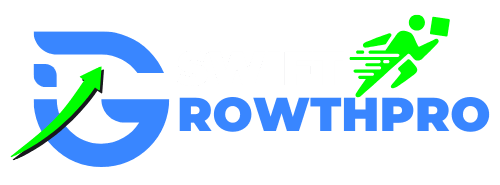How to Pick the Best 3D Modeling Firm for Your Car Project

The choice of the right 3D vehicle modeling service provider will determine if your venture is cutting-edge or falls short of your expectations. The automotive industry relies heavily on the accuracy of 3D auto design, from concept design to production prototypes, which makes this choice crucial to the success of your project.
The ideal 3D model firm has the technological expertise, industry experience, and proven workflows that turn your car’s vision into reality. But with a myriad of 3D modeling firms offering similar services, determining the right fit requires an organized approach to evaluation.
This guide provides the key steps for selecting the best 3D modeling partner that works with your requirements for an automotive project, as well as your budget, timeline, and other requirements. From understanding your needs to negotiating contracts, every step will help you make an informed choice that will ensure the success of your project.
Understanding Your Project Needs
Before contacting potential partners, define your specific 3D automotive modeling requirements. Different automotive projects need different amounts of detail and skills.
External modeling: is focused on the design of body parts, visualizing aerodynamics, and finishing of surfaces. These projects require expert knowledge of car styling, material properties, as well as manufacturing constraints. The modeling company must demonstrate proficiency with complicated contours and surfaces and realistic rendering.
Modeling of interiors: includes the design of the dashboard, seating configurations, dashboard design, and elements of the user interface. This requires a thorough understanding of ergonomics, materials, ls textures, as well as human factors in engineering. Find companies that have experience in interior design for automobiles and optimization of user experience.
The mechanical component model: includes engine components, transmission systems, engine parts, and structural elements. These types of projects require precision dimensions, assembly constraints, and manufacturing requirements. The modeler must be familiar with the principles of automotive engineering and tolerance specifications.
The requirements for detail: differ significantly between projects. Concept visualization could require a lower number of polygons to allow for more rapid production, while manufacturing prototypes requires high-quality models that meet exact specifications. Determine if you require basic geometry, precise models of surfaces, or production-ready CAD files.
Take into consideration your timeline for the project and your expectations regarding revisions. Models that are complex in the automotive industry generally require multiple review cycles, and the partner you choose must be able to handle iterative feedback while ensuring that the project is moving forward.
Researching Potential Companies
Start searching through specific channels for your industry that connect you to experienced 3D auto design experts.
Directories online: such as Clutch, Good Firms, and specific automotive supplier databases, offer filters of 3D modeling firms. These platforms provide client reviews, project portfolios, and descriptions of services that can assist in narrowing your initial search.
Industry-related events: such as automotive trade conferences, shows for CAD, and design fairs give the opportunity to connect directly with modeling companies. These venues permit face-to-face discussions about the capabilities of a project and its suitability before making formal enquiries.
Professional networks: within the automotive sector typically provide the most trustworthy advice. Friends who have worked on similar projects may offer insider insights into the company’s performance, as well as communication quality and acceptable standards for delivery.
When looking at the company’s profiles: concentrate on the automotive industry rather than generic 3D capabilities. Automotive projects require special demands for precision, material understanding, and manufacturing concerns that companiesthato model generically may not be aware of.
Find companies that feature automotive services heavily in the marketing collateral they use. This shows a commitment to the field rather than focusing on the automotive industry as one of a number of services.
Evaluating Portfolios and Case Studies
The portfolio of a company showcases its design capabilities, technical expertise, aesthetics, and project complexity more effectively than any sales pitch.
Relevance to the project: is your main assessment criterion. Companies with a wide range of automotive portfolios recognize specific industry challenges, such as production restrictions and compliance requirements for regulatory agencies.
Quality evaluation: is a way to evaluate the accuracy of models, along with surface finishing, as well as rendering performance. Be sure to look for smooth curves and correct proportions, and an accurate representation of materials. A poor portfolio often indicates inadequate technical expertise or outdated capabilities in software.
The complexity of handling HTML: is apparent in the diversity of portfolios. Companies that are able to handle both basic component modeling as well as complete vehicle assemblies show scalable capabilities that will grow to meet the demands of your project.
Recent examples of work demonstrate the current capabilities and technological use. Portfolios with outdated rendering styles or models with a limited complexity indicate that companies haven’t put money into modern software and training.
Request full case studies of similar projects to yours. These documents should describe the project’s issues, solutions adopted, and the outcomes attained. Companies that are confident about their capabilities can provide this information; however, those with less knowledge often evade these requests.
Checking Technical Expertise and Software Proficiency
The technical capabilities directly affect the quality of projects, compatibility, and timelines for delivery.
Essential software knowledge: covers industry-standard programs such as CATIA, SolidWorks, Rhino, along Autodesk Alias. Businesses should show the latest version of software and have advanced capabilities, not only a basic understanding.
Specific automotive tools: such as ICEM Surf, PowerSHAPE, or other automotive-specific plugins are shown to the industry. These tools improve workflows to model surfaces for cars, which makes projects more accurate and efficient.
Format compatibility: allows seamless integration with your current systems. The modeling company must be able to work with the formats the team utilizes, such as mesh formats, CAD files, and rendering outputs.
Capabilities of rendering: affect the requirements of presentation and visualisation. The company should demonstrate its expertise using professional rendering engines such as KeyShot, V-Ray, or specific tools for automotive visualization.
The patterns of technology adoption show the investment of companies in efficiency and growth. Partners who frequently update software or adopt new tools and invest in ongoing training generally produce better results than those who are using outdated technology.
Examine technical claims using portfolio examples, and ask questions regarding specific software features, workflow procedures, and quality control measures.
Assessing Communication and Project Management Skills
Communication that is clear and well-organized in project management avoids misunderstandings or scope creep. This can lead to delays in delivery.
The speed at which communication is responsive: in the initial phase of inquiries can predict ongoing interactions with the project. Companies that respond quickly to inquiries, respond thoroughly, and provide accurate information typically adhere to these standards throughout project execution.
Protocols for updating project documents: must include periodic milestone reviews, progress reports, and feedback integration processes. Establish expectations for update frequencies, communications channels, and handling of revisions before the project begins.
Management of timeline: capabilities is evident in concerns about project scheduling resources, resource allocation, and deadline management. Companies with experience provide realistic timelines and buffers to accommodate unexpected changes and challenges.
The feedback integration: processes determine how easily revisions can be made. The modeling firm should be able to establish a system for getting, prioritizing, and implementing feedback in order to maintain the momentum of the project.
Cultural and language considerations: are important for international collaboration. It is important to ensure that your company communicates effectively in the language you prefer and can understand your expectations and business culture.
Examine the quality of your communication by requesting detailed proposals for projects, asking technical questions, and observing the quality of your responses.
Considering Cost and Pricing Models
Understanding pricing structures aids in balancing project quality and budget restrictions while avoiding unexpected expenses.
Hourly rates: work well for projects that have no scope or a large number of revisions. This type of pricing is flexible; however, it requires careful tracking of time and managing scope to reduce expenses.
Fixed pricing for projects: is a good choice when clearly defined deliverables are required with only a few revision cycles. This strategy provides budget security; however, it can result in extra costs for scope adjustments.
Pricing based on value: connects costs to the project’s outcomes or the impact on business. Certain companies offer this model for projects with strategic importance where the quality of modeling directly impacts the results of the business.
Relationships between quality and cost: differ significantly between providers. The cheapest price isn’t always the most valuable, and the most expensive price does not guarantee the best outcomes. Be focused on the cost per value instead of exact price benchmarks.
Hidden costs: include revision fees and file format conversion costs, as well as rush delivery costs and any additional rendering charges. Request detailed pricing breakdowns that take into account any potential costs.
Compare quotes on an equal scope, making sure that each proposal includes the same deliverables, revision cycle, and levels of project support.
Reviewing Client Testimonials and References
Feedback from clients provides insight about the performance of the business, its trustworthiness, and quality of partnerships, which portfolios and presentations can’t show.
The authenticity of testimonials: is different in marketing materials. You should look for specific information about the project with quantifiable results and contact information, rather than general praise messages.
Verification of references: involves direct discussions with clients who have previously worked with them about their experience, results from projects, and partner satisfaction. Companies that are reputable will readily provide reference contact information for the relevant projects.
Specific industry feedback: has more weight than general testimonials from clients. Automotive industry references are aware of the challenges of your project and offer relevant insight into your project’s performance.
Recent references to projects: provide the current quality of service and levels of capability. The companies evolve, which is why it is important to take into account feedback from projects completed within the last two years.
Patterns of balanced feedback: indicate honest reviews. Beware of businesses that have only positive reviews, since real feedback is usually a mix of strengths and areas for improvement.
Contact your references directly to discuss project requirements and communication quality, timeframe compliance, and overall satisfaction levels.
Ensuring Data Security and Confidentiality
Automotive projects typically contain proprietary designs, competition information, as well as confidential specifications that require robust security measures. Non-disclosure agreements are recommended for any 3D automotive modeling project. The agreement should include the entire project’s information, all intermediate deliverables, and conclusions from your work.
Security measures for data: include secure protocols for the transfer of files and encrypted storage systems, and restricted access controls. The modeling company must provide a system for secure information.
International laws on data: such as GDPR, could be applicable based on the location of your company and the data handling practices. Make sure you comply with the relevant regulations that apply to your particular industry and the requirements of your geographic location.
IP protection: must clearly define who owns models that are created, as well as derivative works and project methods. Make these provisions clear before the project’s beginning to avoid any future disputes.
Security standards for compliance: might be required to work in the automotive industry. Certain companies hold ISO 27001 certification or other security frameworks that provide an organized approach to data security.
Get detailed information on the security procedures, conformity certificates, and incident response procedures before sharing any confidential information.
Negotiating Contracts and Service Agreements
Well-structured contracts protect both parties and set clearly defined expectations for project execution and delivery of the project.
The scope definition: should provide specific requirements and quality standards, as well as formats for files, as well as revision allowances. A vague description of the scope can cause confusion and cost increases when executing the project.
Specifications for the timeline: should be inclusive of milestones, revision intervals, and the final delivery timetables. Include a buffer of a reasonable length to incorporate feedback and revise cycles.
Terms of payment: must align with the milestones of the project and finalization. Avoid huge initial payments or payment terms that don’t align with timeframes for delivery of value.
Standardization of quality: requires objective standards for acceptable delivery. Establish the acceptable levels of tolerance, requirements for surface quality, and rendering standards before work can begin.
Change management practices create processes to handle scope changes, additional work requests, and timeframe adjustments. Clear change processes stop scope creep and maintain the flexibility of your project.
Dispute resolution methods: offer structured methods for dealing with disagreements regarding deliverables and timelines, or project specifications. Include arbitration or mediation clauses to prevent costly legal actions.
Check all contract clauses carefully, and think about legal advice for high-value or complex projects.
Making Your Final Selection
Once you’ve completed your evaluation which you’ll have the complete information to help you make an informed choice.
Achieving successful 3D automotive modeling collaborations requires more than just technical expertise. A good company will combine the expertise of its industry with a high level of communication and project management expertise, which are compatible with your working style and the project’s requirements.
Begin with an experiment if it is possible. This allows you to assess the dynamics of your partnership, along with communication quality and the deliverable standards, before committing to a larger project.
Be aware that the least expensive choice doesn’t always provide the greatest value for money, and the most expensive option doesn’t always ensure the best results. Concentrate on the combination of experience, capability, and partnership that best meets your goals for the project.
Write down your criteria and selection justification. This helps you make better partner selections as well as provide important insights to improve your evaluation of vendors.
The time spent on a thorough partner selection yields dividends in more efficient project execution, better quality deliverables, as well as stronger long-term relationships with business partners that will help you with your ongoing 3D model of your vehicle.





